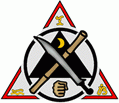Tony Somera
Bahala Na “Come What May” created by GME Leo Giron, one of the original “bladed warriors” and a true World War II Hero. Giron Arnis Escrima system composed of 20 styles: 1. De Fondo – Fighting in a planed position 2. Abanico – Fanning style 3. De salon – Hit and Run style 4. Abierta … Read more
